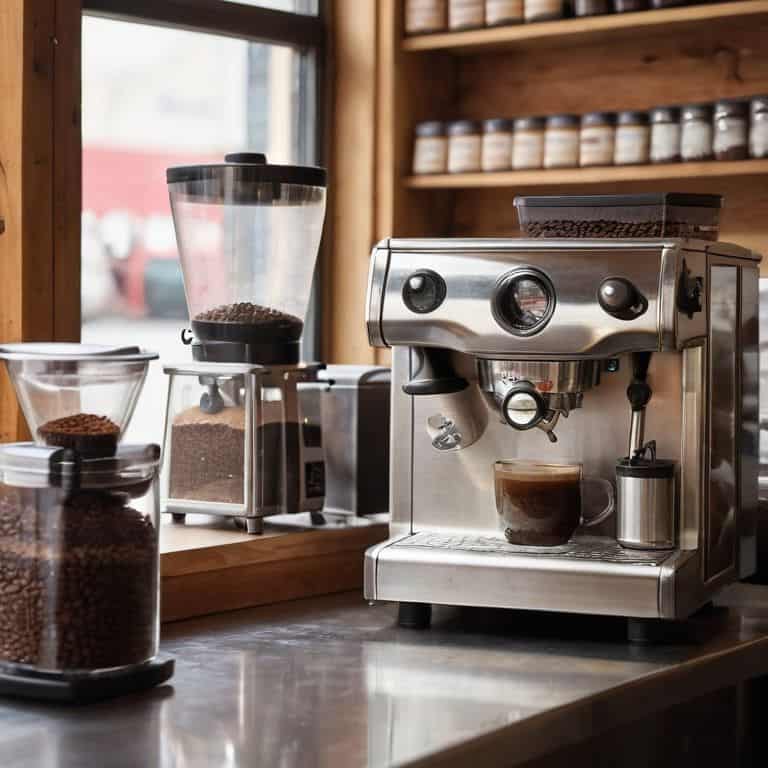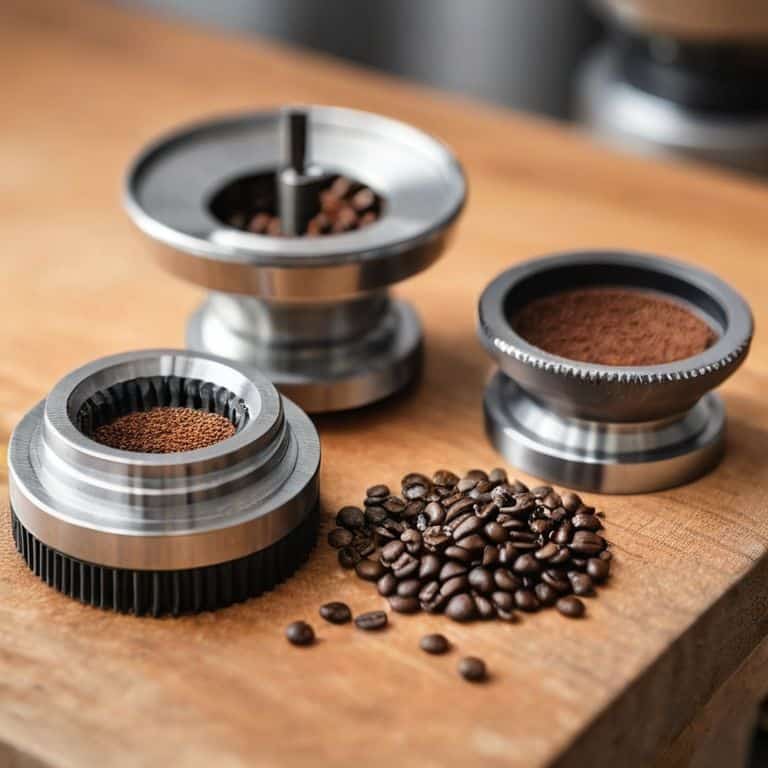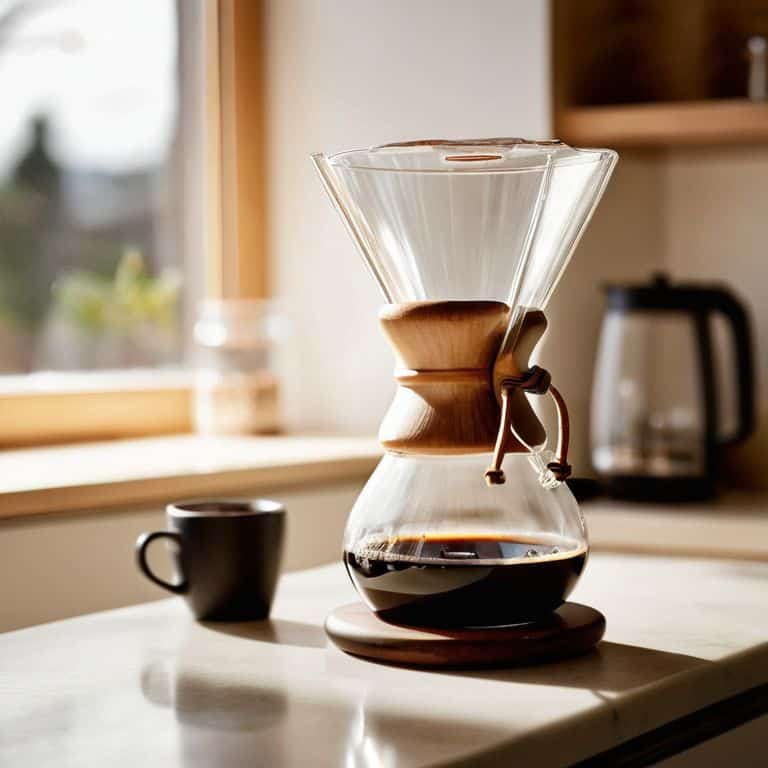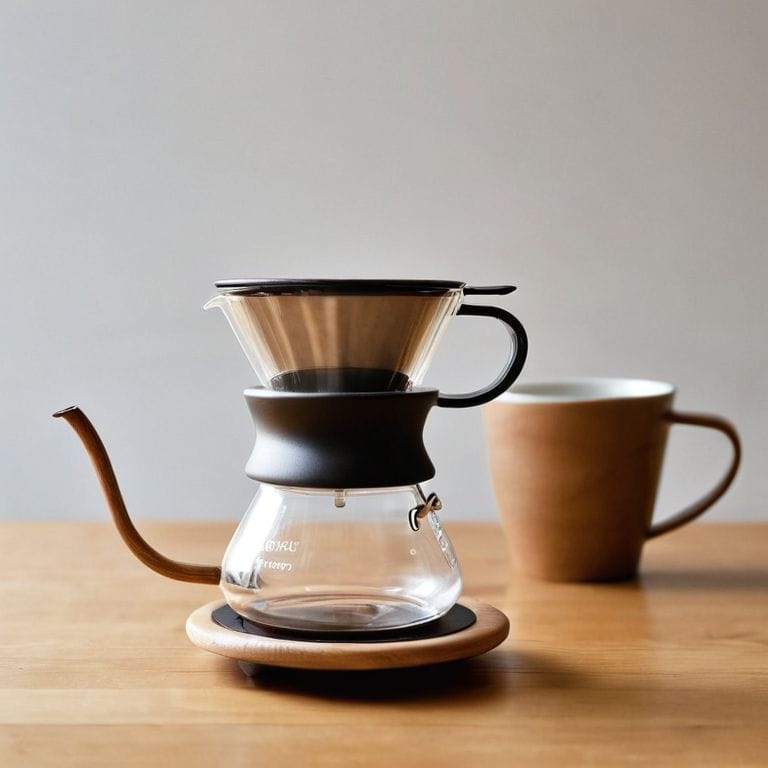I still remember the day I first got into the world of specialty coffee – I was faced with a daunting decision: conical vs flat burr grinders. As a novice, I was overwhelmed by the numerous options and conflicting opinions. Everyone seemed to have a strong stance, but few could explain why one was better than the other. I’ve since spent years working with high-end coffee equipment, and I’ve developed a deep appreciation for the intricacies of grinder design. Now, I’m on a mission to help others make an informed decision, rather than simply following the crowd.
As someone who’s taken apart and rebuilt countless grinders, I can assure you that the choice between conical and flat burr grinders is not just about marketing hype – it’s about build quality and longevity. In this article, I’ll cut through the noise and provide you with a no-nonsense guide to choosing the right grinder for your needs. I’ll share my personal experiences, highlight the key differences between these two types of grinders, and give you the knowledge you need to make a decision that will elevate your coffee game. Whether you’re a coffee enthusiast or a seasoned pro, I’m committed to providing you with honest, experience-based advice that will help you navigate the complex world of conical vs flat burr grinders.
Table of Contents
Conical Burr Grinders

A conical burr grinder is a type of coffee grinder that uses conical shaped burrs to crush and grind coffee beans into a precise, consistent grind. The core mechanism of a conical burr grinder relies on the rotation of the conical burrs, which generate less heat than other types of grinders, preserving the delicate flavors and aromas of the coffee beans. This makes conical burr grinders a popular choice among coffee enthusiasts who value precise control over the grinding process.
As a technician who has worked with countless grinders, I can attest that conical burr grinders offer a unique advantage when it comes to flavor preservation. The reduced heat generation and precise grinding capability of conical burr grinders result in a more nuanced flavor profile that is hard to replicate with other types of grinders. Whether you’re a professional barista or a home brewer, a conical burr grinder can help you unlock the full potential of your coffee beans and experience the rich, complex flavors that they have to offer.
Flat Burr Grinders

A flat burr grinder is a type of coffee grinder that uses flat shaped burrs to grind coffee beans into a precise, consistent grind. The main selling point of flat burr grinders is their high-speed grinding capability, which allows for quick and efficient grinding of large quantities of coffee beans. This makes flat burr grinders a popular choice among commercial coffee shops and high-volume coffee producers who need to grind large amounts of coffee quickly.
As someone who appreciates the mechanical simplicity of well-designed equipment, I have a deep respect for the engineering that goes into flat burr grinders. The high-speed grinding capability of flat burr grinders requires a high level of precision and durability in the burrs and motor, making them a testament to the ingenuity of coffee equipment designers. Whether you’re grinding coffee for a large crowd or just want a reliable grinder for your daily brew, a flat burr grinder can provide the speed and efficiency you need to get the job done.
Conical vs Flat Burr Grinders: Head-to-Head Comparison
| Feature | Conical Burr Grinder | Flat Burr Grinder |
|---|---|---|
| Price | Generally more expensive | Less expensive |
| Key Feature | Consistent grind, low retention | Higher speed, more heat generation |
| Best For | Specialty coffee, high-end users | General coffee drinkers, commercial use |
| Grind Consistency | Excellent | Good |
| Heat Generation | Low | Higher |
| Maintenance | Easier to clean | More complex to clean |
| Noise Level | Quieter | Louder |
Conical vs Flat Burr

When it comes to conical vs flat burr grinders, the type of burr is a crucial factor in determining the quality of your grind. This is because the burr type directly affects the _flavor profile_ of your coffee, making it a key consideration for coffee enthusiasts.
In a head-to-head comparison, conical burrs tend to produce a more consistent grind, which is essential for achieving optimal flavor. On the other hand, flat burrs are often louder and can generate more heat, which can _damage the beans_. However, flat burrs are also known for their ability to handle _oily beans_ more effectively.
In terms of practical implications, conical burrs are generally easier to clean and maintain, making them a more low-maintenance option. After careful consideration, I declare conical burrs the winner in this category due to their ability to produce a _superior grind_ with less hassle.
Key Takeaways: Conical vs Flat Burr Grinders
In terms of durability and longevity, conical burrs tend to outlast flat burrs due to their more forgiving nature and lower friction during the grinding process
From a maintenance perspective, flat burrs are generally easier to clean and replace, but conical burrs offer better heat dissipation, which can lead to a more consistent grind
When it comes to the actual grind quality, conical burrs are often preferred for their ability to produce a more consistent particle size, while flat burrs can sometimes introduce a bit more variability, affecting the overall flavor profile of the coffee
The Heart of the Matter
A good conical burr grinder can be a symphony of steel and precision, but a bad one is just a noisy, heat-producing nightmare – and I’ve seen my fair share of both, which is why I always say that the grinder is the unsung hero of your coffee setup, not the flashy espresso machine.
Simon Adler
The Final Verdict: Which Should You Choose?
As I’ve delved into the world of conical vs flat burr grinders, it’s become clear that the choice between these two isn’t just about personal preference, but about understanding your coffee goals. Conical burrs are known for their exceptional flavor preservation, making them a top pick for those who want to bring out the nuances in their coffee. On the other hand, flat burrs offer speed and efficiency, ideal for high-volume coffee drinkers who need a quick turnaround without sacrificing too much quality.
When it comes to declaring an overall winner, I have to say that conical burrs are the way to go for coffee aficionados who value flavor above all else. However, for busy households or commercial settings where speed is of the essence, flat burrs are the better choice. Ultimately, the decision comes down to your individual needs and priorities, but if you’re looking for a grinder that will elevate your coffee game, conical burrs are the clear winner.
Frequently Asked Questions
What are the key differences in the grinding performance between conical and flat burr grinders?
Grinding performance is where the rubber meets the road. Conical burrs tend to produce a more consistent grind, especially for finer settings, while flat burrs can generate a bit more heat and noise, but still deliver a precise grind. I’ve seen it time and again in my workshop – conical burrs are generally easier on the beans, but flat burrs can handle higher volumes with ease.
How do conical and flat burr grinders compare in terms of heat generation and potential damage to the coffee beans?
Heat generation is a crucial factor – conical burrs tend to produce less heat than flat burrs, reducing the risk of damaging those precious beans. I’ve seen it firsthand in my workshop: conical burrs’ slower rotation and more efficient grinding process generate less friction, preserving the coffee’s natural flavors and oils.
Which type of burr grinder is more durable and requires less maintenance, conical or flat burr?
In my workshop, I’ve seen both conical and flat burr grinders come and go, but if I’m being honest, conical burrs tend to be more forgiving and require less maintenance. The design allows for a more gradual wear, making them less prone to overheating and misalignment issues that can plague flat burrs.



